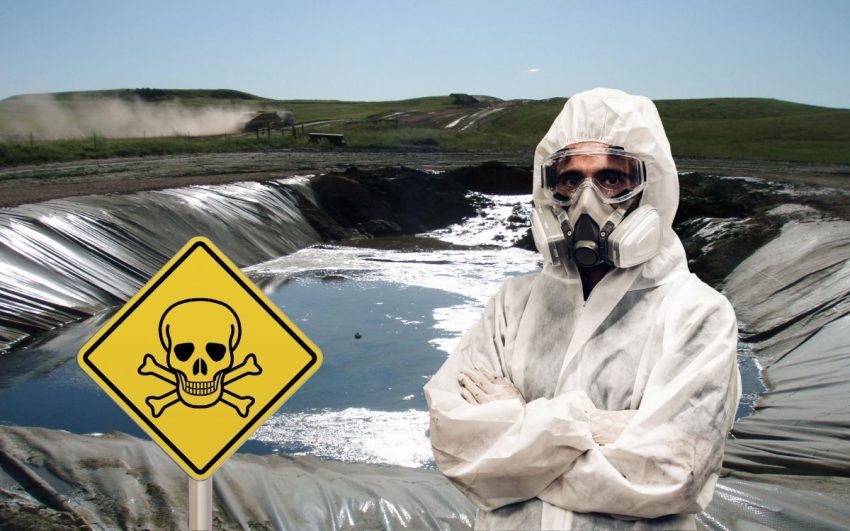If you’re a farmer in Texas or anywhere in this great country, you know water is life. Without it, crops wither, livestock suffers, and families go under. Texas has been hammered by droughts for years, and everyone is scrambling for solutions. But the latest fix coming out of Austin has a lot of us worried sick. We’re talking about House Bill 49, signed by Governor Greg Abbott back in June, which opens the door to using treated fracking wastewater for irrigating crops. It sounds innovative on paper, recycling waste from oil and gas operations to ease the water crunch. But dig a little deeper, and it starts looking like a recipe for disaster, one that could poison our soil, our food, and our livelihoods just like the EPA’s sewage sludge fiasco did to so many hardworking farmers.
Let me break this down for you. Fracking, or hydraulic fracturing, pumps millions of gallons of water mixed with chemicals deep underground to crack open rock and release oil and gas. What comes back up is produced water, a nasty brew loaded with salts, heavy metals, hydrocarbons like benzene, naturally occurring radioactive materials, and who knows what else from the secret fracking fluids companies use. Texas produces billions of barrels of this stuff every year, mostly from the Permian Basin, and right now, most of it gets injected back underground or disposed of. But with water shortages biting hard, some companies are pushing to clean it up and sell it for farming. The new law, effective September 1, lets treated produced water flow into rivers, streams, or straight onto fields for non-edible crops at first, with promises it could expand to food crops if proven safe.
Proponents, including Agriculture Commissioner Sid Miller, say tech advancements can strip out the bad stuff, turning waste into a lifeline for drought-stricken farms. A West Texas company claims they’ve got methods to make it clean enough for release into waterways that farmers draw from. And sure, in a state where water demand is skyrocketing and reservoirs are running low, it makes sense to look at every option. Farmers are desperate; some are already fallowing fields or selling off land because they can’t irrigate. But here’s the rub: is this treated water really safe, or are we just kicking the can down the road, setting up farmers for a nightmare like the one with sewage sludge?
Remember that mess? For decades, the EPA has pushed biosolids, basically treated sewage sludge from wastewater plants, as a cheap, nutrient-rich fertilizer for farms. They called it recycling, a win-win for cities dumping waste and farmers boosting soil. But it turns out this sludge is laced with PFAS, those forever chemicals that don’t break down and build up in soil, water, plants, and animals. Nearly 70 million acres of U.S. farmland could be tainted, according to estimates, and the stories from affected farmers are heartbreaking.
Take Texas ranchers like the Colemans or others who’ve spoken out. They spread biosolids on their land, thinking that since it was EPA-approved, it would be safe. Instead, their soil got poisoned, crops failed, and livestock started dying from liver disease and other horrors. One farmer in Johnson County saw 47 cows and calves drop dead, their land rendered worthless, drinking water contaminated, and property values tanked. In Nebraska, a guy like Jason Grostic had his 400-acre farm deemed unusable after PFAS from sludge wrecked everything; no warnings from the EPA or anyone. These chemicals seep into groundwater, accumulate in hay and feed, and end up in milk, meat, and veggies we all eat. Farmers are left holding the bag, facing lawsuits, health issues, and bankruptcy while the polluters walk away.
Now, fast-forward to fracking water. Skeptics, including farmers and advocates, are raising red flags that sound eerily familiar. Even after treatment, traces of toxic chemicals could linger, building up in soil over time just like PFAS. What about long-term effects on crop yields, soil health, or human health? Testing protocols aren’t fully transparent, and oversight might not catch everything. With policies like this, we’re risking giving everyone cancer in the name of progress. And let’s not forget, fracking fluids often contain PFAS themselves, so who’s to say this wastewater isn’t carrying the same forever chemicals that doomed those sludge-spread farms?
From a farmer’s viewpoint, this is maddening. We’re the ones who pour our sweat and savings into the land, generation after generation. We need reliable water, not experiments that could turn our fields toxic and our produce unsellable. Imagine harvesting cotton or pecans irrigated with this stuff, only to find out years later it’s contaminated, markets reject it, and your farm is a superfund site. The EPA’s sludge push was supposed to help, but it devastated lives; why repeat the mistake with fracking water? Especially when alternatives like better conservation, rainwater harvesting, or desalination exist, though they’re pricier up front.
Don’t get me wrong, innovation is key, and if companies can prove this water is 100 percent safe through independent, rigorous testing, then maybe it’s worth exploring. But right now, the rush feels like putting Big Oil’s waste ahead of family farms. Farmers deserve better: clear warnings, strong regulations, and support to weather droughts without gambling their futures. Thousands have already petitioned the EPA to ban PFAS in sludge; maybe it’s time to demand the same scrutiny for fracking water.
What about you? If you’re a farmer dealing with water woes or worried about this, share your thoughts below. Let’s push for policies that protect our land, not poison it. After all, strong farms mean a strong America, and we can’t afford another sludge-style catastrophe.


